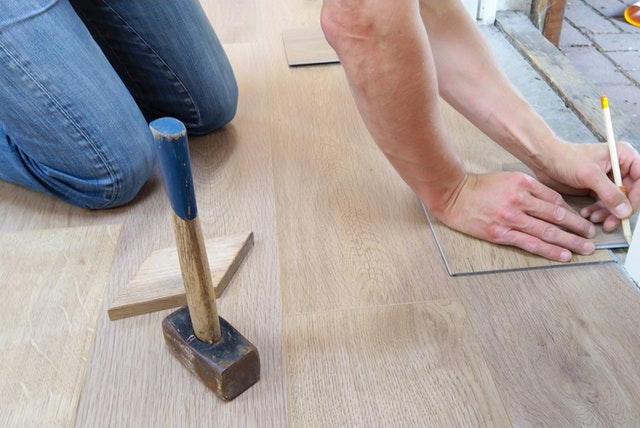How Can I Budget for Home Improvements?

Home improvements allow you to to make upgrades and add convenient features to your house. In 2018, American homeowners spent around $394 billion on improvement projects, including air conditioning and heating systems, waterproof roofs, soundproof rooms and renewable energy.
Do you want to save money for your dream renovation? Then follow the six tips below for creating a budget and sticking to it.
1. Determine Your Goals
Before you begin a renovation project, ask yourself what you hope to accomplish. Perhaps you want more counter space for appliances and dinner prep? Maybe you’d like an upgraded bathroom with a whirlpool tub and heated tiles? Once you’ve narrowed it down to one goal, determine how much you’re willing to spend.
2. Estimate the Costs
You have a goal — it might be a new patio or expanded master bedroom. Now it’s time to determine the costs. Experts say you should never spend more on a room than its value toward the home. For example, say your home is worth $200,000, and the kitchen takes up 15% of the square footage. In this case, you wouldn’t want to spend more than $30,000 on a kitchen remodel.
3. Account for Hidden Fees
You never know how much a renovation will cost until you start digging. Sure, your home looks perfect on the outside. However, it’s not uncommon for a remodel project to dig up hidden issues, whether beneath floorboards or under wallpaper. Plan for these expected fees by cushioning your budget with an additional 10-20%.
4. Understand Cost vs. Gain
You’ve probably heard the saying, “You need to spend money to make money.” The same is true when it comes to remodeling your home. The added value often outweighs the cost of upgrades and improvements. If you’re ever planning on selling your home, the added return on valued renovations can help with your budget down the line.
This is a personal decision, as only the homeowner can know which changes they’ll value most. But if you’re tempted to spend less in the moment, you may be reducing the chance to earn on long-term gains. As a general rule, opt for renovations with timeless appeal, including hardwood flooring, mid-range kitchen upgrades and bathroom accessibility changes.
5. Limit Your Wants
When you first start a new project, you might feel the urge to splurge. It may seem like you have plenty of funds for fixtures and finishes, only a small fraction of the entire budget. As the project continues, though, you’ll begin to see the money slowly disappear. It’s OK to make a few sacrifices for something you want, but it’s necessary to limit your wants to save for potential setbacks.
6. Assess Financing Options
Most people can’t cover all remodeling expenses with cash. In this case, you’ll have to borrow to finish the project. One option is a home-equity line of credit, which allows you to borrow money — up to a certain amount— when needed. Another choice is a home equity loan, where you apply for a lump sum up front and repay at a fixed interest rate in monthly installments.
Are you planning a home improvement project? Save money the easy way by creating a budget. Determine your No. 1 goal and come up with the estimated costs. Don’t forget about hidden fees and think about the value of the upgrade once complete. If you don’t have enough cash on hand to cover a remodel, consider convenient financing options to fund the changes you’re dreaming of.
Holly Welles, Real Estate Writer, The Estate Update



